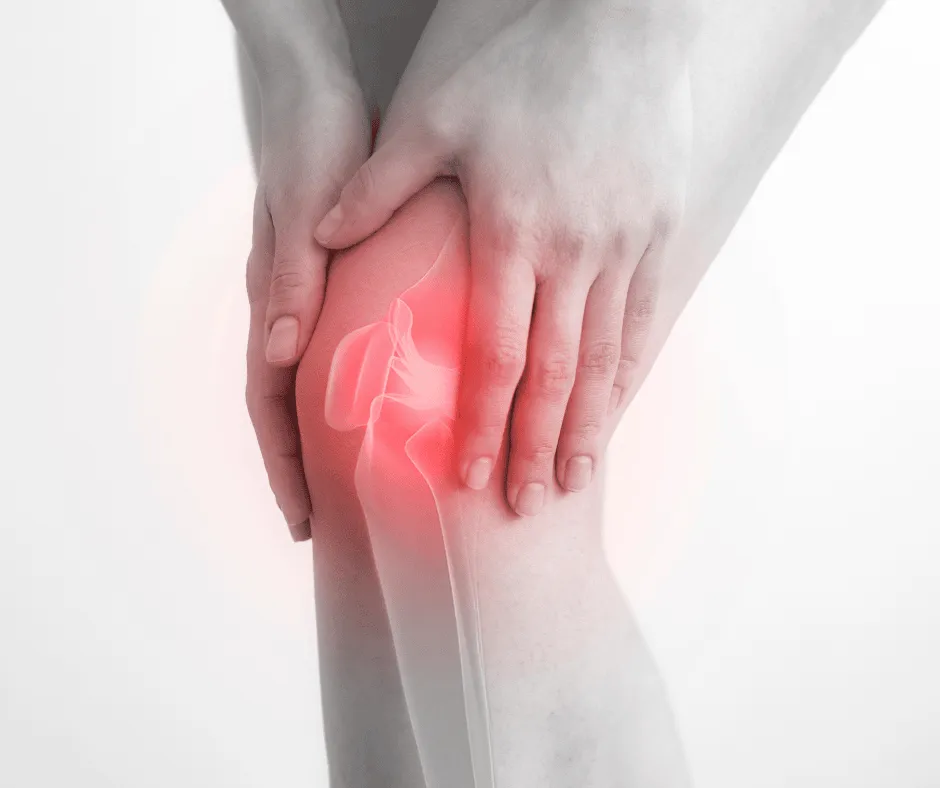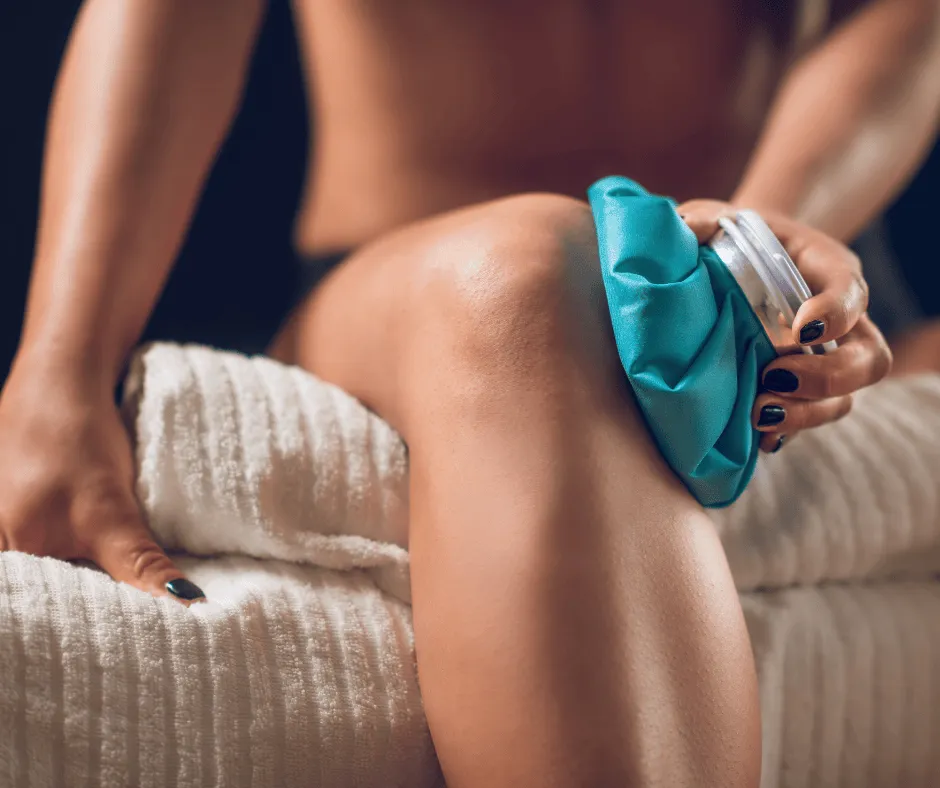Knee Pain Relief
Your Pathway to Knee Pain Relief
In the journey of life, knee pain can often emerge as an unwelcome companion, causing discomfort to people of various ages. From young athletes to active seniors, knee pain is a widespread issue that doesn't discriminate. It may be born out of a sudden injury, like a torn ligament or ruptured cartilage, or it could be the byproduct of a medical condition such as arthritis, gout, or even an infection.
Thankfully, minor knee pain often responds positively to strategies such as physical therapy, using knee braces, maintaining a healthy lifestyle, and can often provide significant relief. Here at PhysioFit, we understand that your journey to pain-free living is unique. We're here to provide customized, evidence-based treatments with a fitness-based approach to alleviate your knee pain effectively, helping you return to your everyday activities.
What You Should Know
Aging, injury, or recurring stress on the knee are the leading causes of knee pain.
Prevalent knee issues encompass sprains or strains in ligaments, cartilage tears, tendonitis, and arthritis.
A proper diagnosis of a knee problem involves a thorough evaluation from a professional or a medical examination, supplemented by diagnostic procedures such as MRIs, CT scans, X-rays, or arthroscopy.
Depending on the type and severity of the condition, both non-operative and surgical treatments are available to alleviate knee pain and problems.

4 of the Most Common Knee Problems
The knee, a complex and integral joint in the human body, can be prone to several issues. These complications often result from natural aging, consistent stress on the knee joint, or an injury. Let's discuss four of the most common knee problems:
Strained or Sprained Knee Ligaments and Muscles: Often the result of a sudden blow or twist to the knee, strains or sprains affect the ligaments and muscles in your knee. The typical symptoms include pain, swelling, and difficulty in walking.
Torn Cartilage: Our knees consist of menisci, which are pads of connective tissue acting as shock absorbers while providing stability. These can tear due to knee trauma, often coinciding with sprains. The usual treatment ranges from wearing a supportive brace to undergoing surgery, depending on the severity of the tear.
Tendonitis: This refers to the inflammation of tendons from overuse during activities like running, jumping, or cycling. An example is patellar tendonitis, also known as "jumper's knee." It's common among sports enthusiasts who partake in high-impact activities like basketball, where the repeated force of landing can strain the tendon.
Arthritis: Osteoarthritis, the most common type affecting the knee, is a degenerative condition where the joint cartilage wears away gradually, often affecting middle-aged and older individuals. Excessive stress on the joint, due to repeated injury or being overweight, can cause it. Another form, Rheumatoid arthritis, can cause inflammation and destruction of the knee cartilage, often affecting individuals at a younger age than osteoarthritis does.
Remember, if you resonate with any of the symptoms or conditions mentioned, we highly recommend making an appointment with us for a thorough evaluation and personalized treatment plan.
Preventing Knee Pain
While it might be impossible to completely avoid knee pain, these strategies can aid in averting injuries and slowing down joint wear:
Maintain a Balanced Weight: Keeping your weight in check is one of the most beneficial actions for your knees. Each extra pound exerts additional stress on your joints, heightening the likelihood of injuries and osteoarthritis.
Condition Yourself for Sports: To equip your muscles for the rigors of sports activities, incorporate conditioning exercises into your routine.
Aim for Perfection in Practice: Strive to perfect your technique and movement patterns for any sport or physical activity. Professional coaching can be valuable in this aspect.
Strengthen and Flex: Weak muscles often precipitate knee injuries. Strengthening your quadriceps and hamstrings, which are front and back muscles of your thighs, will help bolster your knee support. Engage in balance and stability training for more effective muscle coordination around your knees.
Remember, tight muscles can also lead to injuries, so flexibility exercises should be a regular part of your workout regime.
Exercise Wisely: If you're dealing with osteoarthritis, chronic knee pain, or frequent injuries, you may need to reconsider your exercise methods. Contemplate shifting to swimming, water aerobics, or other low-impact activities. At times, simply limiting high-impact activities can result in substantial relief.

Common Symptoms of Knee Pain
Inflammation and rigidity
A reddish hue and a warm feeling when touched
Sounds of popping or crunching
A sense of weakness or lack of stability
Difficulty in fully extending the knee
Remember, if you resonate with any of the symptoms or conditions mentioned, we highly recommend making an appointment with us for a thorough evaluation and personalized treatment plan.
Please Note: The information provided on our website is intended for general education and is not a substitute for professional medical advice. Each individual's situation and body is different. Therefore, what may work for one person may not work for another. We care about your well-being and advise you to reach out to us to discuss your specific needs before implementing any advice from our website.
Your Source for All Things Physical Therapy in Bend Oregon
The PhysioBlog

Avoid the "Always In Season" Training Mistake | PhysioFIT Bend Oregon
Whether you’re chasing PRs, hiking Pilot Butte every weekend, or grinding it out at the gym between work and family, here’s a hard truth most active adults in Bend, Oregon don’t want to hear:
You might be training like you’re always in season… and that’s a problem.
At PhysioFIT at The Performance Collective, we work with athletes of all kinds—from mountain bikers and CrossFitters to weekend warriors and backcountry skiers. And one of the most common mistakes we see? People treating their bodies like they're always on. Always pushing. Never pausing. Never rebuilding.
The Athlete's Secret: Training in Phases
Professional athletes don’t train the same way year-round. Their entire performance strategy is built around periodization—structured phases of stress, recovery, adaptation, and peak performance. That cycle revolves around two core phases:
1. In-Season Phase: Maintain + Compete
This is where most of us think we should live. The “go-time” mode. The sexy part. The performance stage.
But in-season training is not about growth—it’s about preservation. It’s about doing just enough to maintain your edge, avoid injury, and stay sharp during competition or peak activity windows.
Here’s what smart in-season training looks like:
Prioritizing recovery over volume
Avoiding spikes in load or intensity
Monitoring for fatigue and overuse warning signs
Maintaining mobility and joint health through prehab routines
Staying consistent but conservative with strength training
Think of it as treading water at a high level—not sinking, not surging.
2. Off-Season Phase: Rebuild + Reset
Now here’s where the magic happens—and it’s where most active adults fall short.
The off-season is not about getting soft. It’s about getting smart.
You’re not backing off because you’re weak. You’re backing off to build back stronger. This is your chance to:
✅ Heal micro-tears in muscle and connective tissue
✅ Address mobility restrictions and movement inefficiencies
✅ Rebalance strength across joints and muscle groups
✅ Develop better mechanics and foundational endurance
✅ Focus on the little things that make a big difference when you’re back in go-mode
Skipping this phase is like skipping leg day for your whole body. Eventually, the imbalance will catch up with you—usually in the form of nagging pain, poor performance, or injury.
Why Always Being “In-Season” Wears You Down
Here’s what we see at PhysioFIT all the time:
🚫 Low-grade fatigue that just won’t go away
🚫 Flat workouts even with plenty of sleep and nutrition
🚫 Nagging tendon pain in the knees, shoulders, or elbows
🚫 Back tightness or joint pain that creeps up after every session
🚫 A growing pile of PT sessions, chiro visits, and massage appointments that treat symptoms but not the root cause
The root cause? You never gave your body time to adapt.
Active Adults Need Off-Seasons More Than Pros
Here’s the kicker: If you’re not a professional athlete, you might need an off-season even more.
Why? Because you’re juggling stressors athletes don’t have to deal with:
Long work hours
Parenting
Poor sleep
Travel
Deadlines
Mental fatigue
All of these increase your overall load—even before you step into the gym. That’s why many of our Bend clients at PhysioFIT perform better once they adopt a smarter, season-based approach to their training.
How to Build Your Own Training Seasons (Without a Coach)
Even if you’re not prepping for the Olympics, you can use the same principles:
✅ Step 1: Pick Your “Competition Season”
Choose 1–2 times per year where you’ll push hard—races, ski trips, backpacking adventures, etc.
✅ Step 2: Plan a Structured Off-Season
2–3 months of reduced load, increased mobility work, and strength training to fix weak links.
✅ Step 3: Layer in a Pre-Season Phase
4–8 weeks before go-time, ramp up intensity and sport-specific training.
✅ Step 4: Check in with a Physio
Get assessed. Address compensations. Test your strength and mobility objectively. (We use force plates, dynamometers, and advanced movement screens at PhysioFIT.)
Conclusion
You can’t just keep hammering and expect to level up.
Recovery is the gateway to performance.
By learning to respect both the in-season and off-season phases, you’ll unlock:
✅ More gains
✅ Fewer injuries
✅ Better energy
✅ Longer athletic longevity
✅ More fun doing what you love
And that’s what we’re all about at PhysioFIT.
Ready to Reset?
If you’re stuck in permanent “go” mode and your body’s giving you warning signs, it’s time for a smarter approach. At PhysioFIT at The Performance Collective in Bend, Oregon, we help active adults and recreational athletes build personalized performance plans that respect the cycle—and get results.
Schedule a recovery & performance assessment with one of our sports therapy specialists today.
Sources:
Copyright PhysioFIT 2025 . All rights reserved


